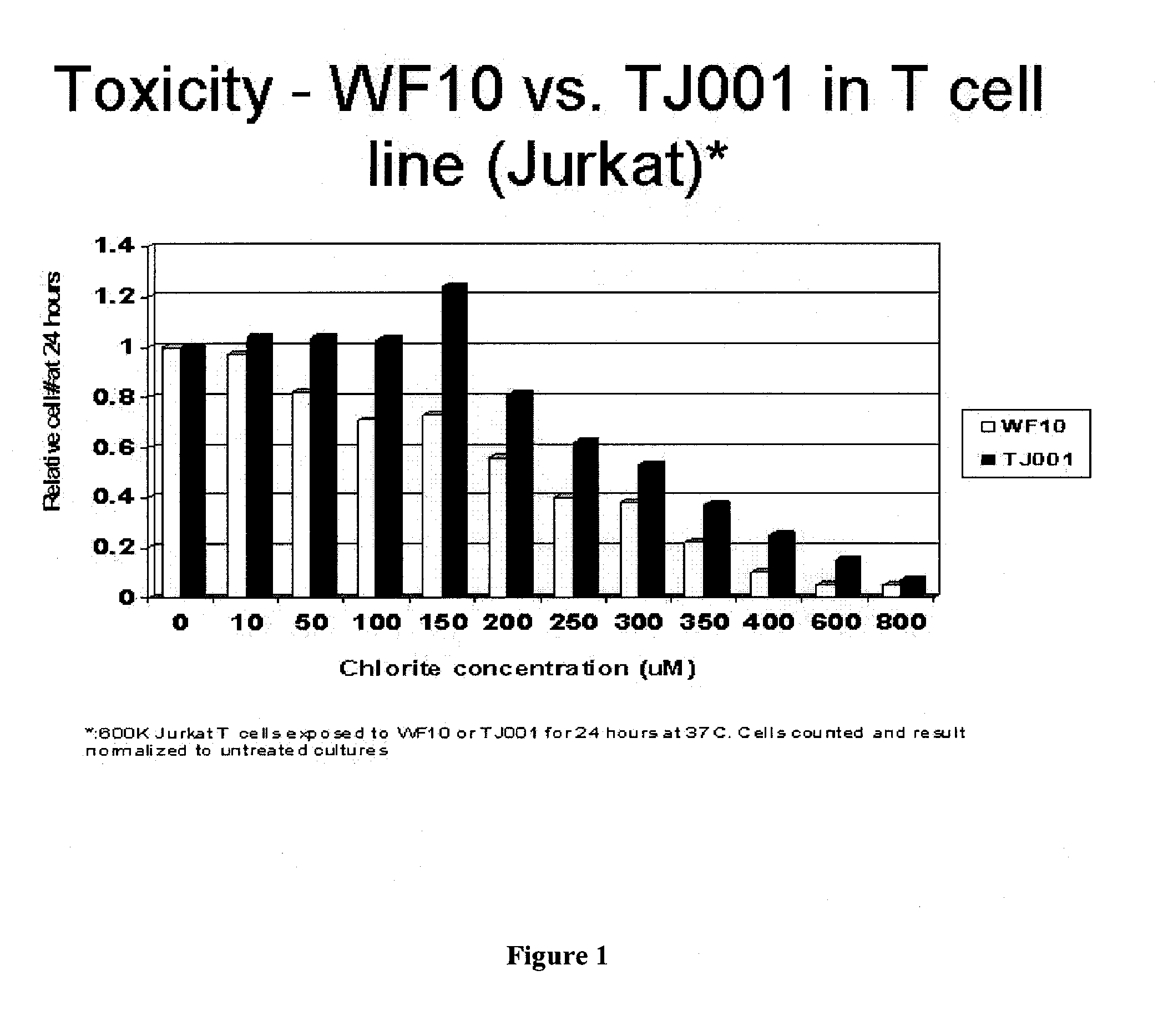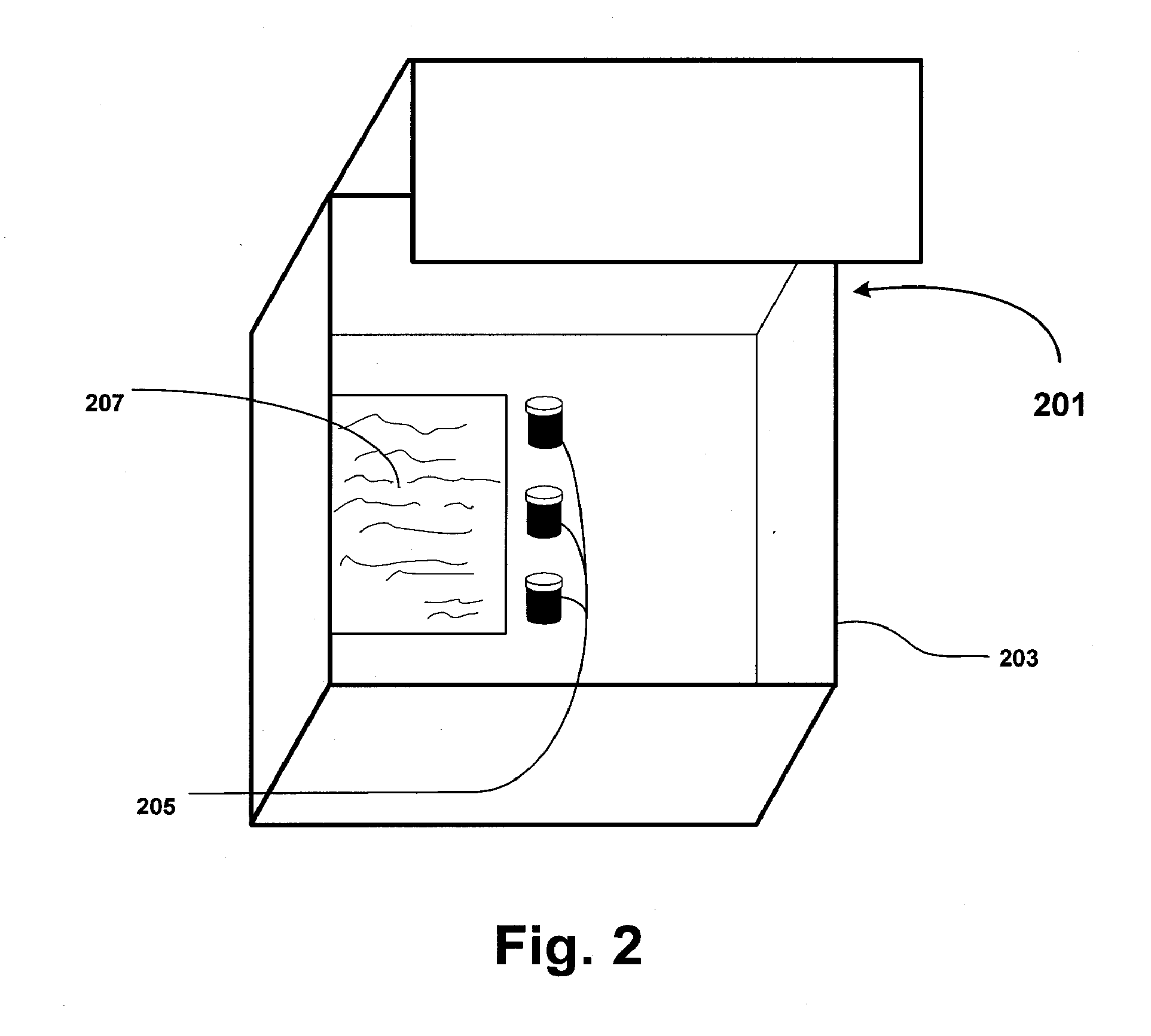Chlorite Formulations, and Methods of Preparation and Use Thereof
a technology of chlorite and formulation, applied in the field of chlorite formulation, and methods of preparation and use thereof, can solve the problems of affecting the effect of chlorite, affecting the quality of chlorite,
- Summary
- Abstract
- Description
- Claims
- Application Information
AI Technical Summary
Benefits of technology
Problems solved by technology
Method used
Image
Examples
example 1
Purification of Chlorite
[0152] This procedure was performed in diminished light, e.g., with overhead lights off, and out of direct sunlight.
[0153] Sodium Chlorite (80 wt %, Sigma-Aldrich lot #09911CD) was dissolved in 1000 mL of distilled water. The flask was mounted to a rotary evaporator, and the bath temperature set to 70° C. Vacuum was applied, and increased until the water began to distill over in a controlled manner. The vacuum was applied until the mixture put down a load of solids, and 550 mL of water had distilled over. Using a coarse sintered glass funnel, the solids were removed by suction filtration of the hot solution. These solids were mostly sodium chloride.
[0154] The filtrate was stored at −25° C. for a period of time sufficient to precipitate the chlorite (approximately 24 hours). The entire mixture froze solid. The frozen mixture was broken up and centrifugally filtered while cold. Purified sodium chlorite was collected as the frozen solid melted. The centrifuge...
example 2
Purification of Chlorite
[0155] The method described in Example 1 was performed, but using coarse sintered glass suction filtration rather than centrifugal filtration for the cold filtration. After the first filtration, chlorite purity after the first crystallization was 91.9%. The crystallization step was repeated a second time. After the second recrystallization / suction filtration, the chlorite was 99.5% pure.
example 3
Adjustment of Chlorite Formulation pH
[0156] To prepare a chlorite formulation at a lower pH, sodium chlorite purified by the method of Example 2 was dissolved in distilled water and stirred using a magnetic stirrer. A calibrated pH probe was put in the solution. Small amounts of monosodium phosphate monohydrate were added, until the pH reached and stabilized at 7.62. In the event of the pH drifting lower than the target pH, the pH can be adjusted back with 0.1 N NaOH.
[0157] This solution was sampled, and assayed for sodium chlorite content by HPLC. Column: Novosep A-2 Alltech 250×4 mm; eluant: 3.6 mM sodium carbonate. Rate: 0.8 mL / min. Detected with a suppressed Alltech 650 conductivity detector. Quantitation was performed by standard iodimetry. See Inorganic Syntheses, section under Chlorine (IV) Oxide; Sodium Chlorite analysis, p. 156. The concentration was determined to be 1.36 M. To prepare a 4.25 wt % solution (0.47 M), 200 mL were diluted to 580 mL.
PUM
| Property | Measurement | Unit |
|---|---|---|
| Temperature | aaaaa | aaaaa |
| Temperature | aaaaa | aaaaa |
| Temperature | aaaaa | aaaaa |
Abstract
Description
Claims
Application Information
 Login to View More
Login to View More - R&D
- Intellectual Property
- Life Sciences
- Materials
- Tech Scout
- Unparalleled Data Quality
- Higher Quality Content
- 60% Fewer Hallucinations
Browse by: Latest US Patents, China's latest patents, Technical Efficacy Thesaurus, Application Domain, Technology Topic, Popular Technical Reports.
© 2025 PatSnap. All rights reserved.Legal|Privacy policy|Modern Slavery Act Transparency Statement|Sitemap|About US| Contact US: help@patsnap.com


